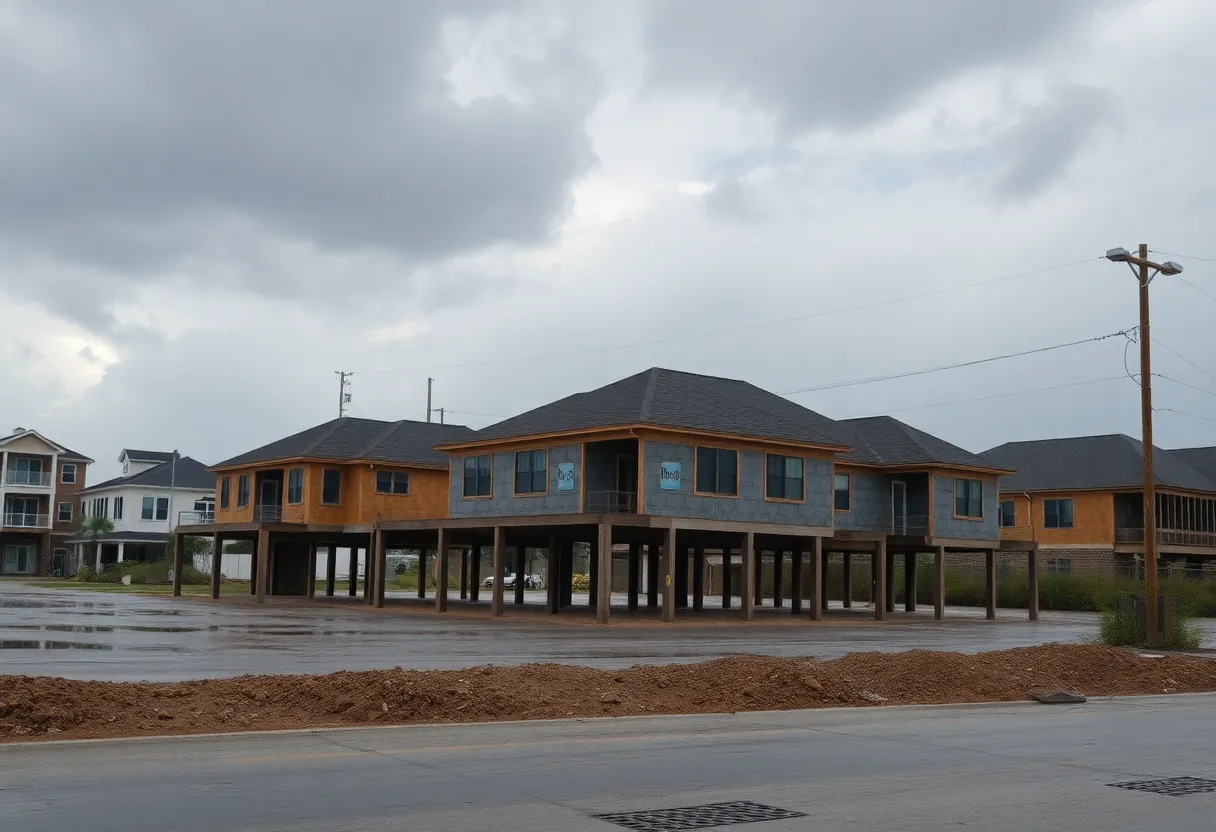News Summary
New Jersey proposes revised flood regulations requiring buildings in flood-prone areas to be built at least 4 feet above federal standards. This adjustment responds to updated sea level rise projections and aims to enhance community resilience while promoting affordable housing. Public comment periods and hearings will follow the announcement, with final regulations expected by the end of 2025. Environmental advocates express concerns over potential safety compromises but recognize the need for comprehensive flood management strategies.
New Jersey Proposes Changes to Coastal Flood Regulations
New Jersey is set to implement revised coastal flood regulations that will reduce the elevation requirement for new construction in flood zones to 4 feet above federal standards. This change is part of the Resilient Environments and Landscapes (REAL) coastal flood rules, which the New Jersey Department of Environmental Protection (NJDEP) announced as a response to public feedback received since their initial proposal in 2024.
The proposed regulations will be published in the New Jersey Register on Monday and will begin a 60-day public comment period, during which a public hearing is anticipated to take place in September. The formal adoption of the new rules is expected by the end of 2025.
Details of the Proposed Regulation Changes
One significant alteration in the proposal is the decrease from an earlier requirement of 5 feet to 4 feet above the base flood elevation set by the Federal Emergency Management Agency (FEMA). This adjustment effectively reduces the amount of land affected by New Jersey’s Flood Hazard Area Control Act standards. The shift is based on recent updates to climate projection data, revealing that previous estimates anticipated a sea-level rise of 5.1 feet by 2100, which has now been adjusted to 4.4 feet.
The amendments are in line with findings from a 2019 report by a Rutgers University Science and Technical Advisory Panel, which focused on projections for sea-level rise and global temperature increases.
Focus on Resilience and Economic Development
The proposed regulations not only aim to improve safety but also clarify provisions to support resilient housing and bolster economic development projects. NJDEP plans to broaden its flood hazard, stormwater, coastal zone, and freshwater wetland regulations, allowing projects that have submitted complete applications before the new regulations take effect to be examined under the existing rules.
In addition, the regulations will introduce “dry access” standards for infrastructures such as roads and buildings. This is intended to ensure that emergency vehicles can navigate flood-prone areas efficiently during storms.
Considerations for Affordable Housing and Existing Projects
Recognizing the pressing need for affordable housing, the proposal includes exceptions to flood rules for certain projects. Furthermore, the new construction regulations will give a grace period to ongoing projects, permitting applications to be submitted within 180 days after the regulations are approved, allowing for less immediate compliance with the new standards.
Environmental Concerns and Future Strategies
New Jersey has also laid the groundwork for flood risk management by previously adopting the Inland Flood Protection Rule, which further defines high-risk flood areas along the state’s rivers. This amendment will be complemented by various strategies such as beach replenishment and enhancing infrastructure to tackle flooding challenges in vulnerable regions.
Ongoing Assessment and Community Engagement
The proposed rules will undergo reassessment every five years, allowing for updates based on the latest scientific findings and climate modeling. New Jersey officials recognize that tackling flooding issues in susceptible communities requires a multifaceted approach, emphasizing that merely raising elevations is insufficient for effective flood risk management.
As these regulations move forward, they embody a critical step toward ensuring that New Jersey’s coastal communities can better withstand the challenges posed by future flooding, sea-level rise, and storm surges.
Deeper Dive: News & Info About This Topic
Additional Resources
- Patch: NJ Proposing New Height Rules for Flood Zone Construction
- Wikipedia: Flood Zone
- News From The States: Amended NJ Flood Rules Plan
- Google Search: New Jersey flood regulations
- OCNJ Sentinel: NJDEP Scales Back Coastal Flood Rules
- Google Scholar: New Jersey flood management
- Asbury Park Press: New Jersey Proposal to Lift Construction Standards
- Encyclopedia Britannica: Flood Management
- News From The States: NJ Governor Discusses Flash Flooding
- Google News: New Jersey flood rules
Author: Construction CA News
The CALIFORNIA STAFF WRITER represents the experienced team at constructioncanews.com, your go-to source for actionable local news and information in California and beyond. Specializing in "news you can use," we cover essential topics like product reviews for personal and business needs, local business directories, politics, real estate trends, neighborhood insights, and state news affecting the area—with deep expertise drawn from years of dedicated reporting and strong community input, including local press releases and business updates. We deliver top reporting on high-value events such as the Rose Parade, Coachella, Comic-Con, and the California State Fair. Our coverage extends to key organizations like the California Building Industry Association and Associated General Contractors of California, plus leading businesses in technology and entertainment that power the local economy such as Apple and Alphabet. As part of the broader network, including constructionnynews.com, constructiontxnews.com, and constructionflnews.com, we provide comprehensive, credible insights into the dynamic landscape across multiple states.




